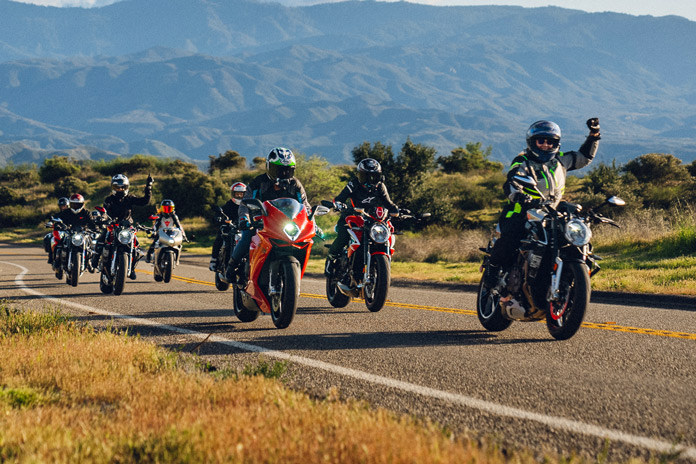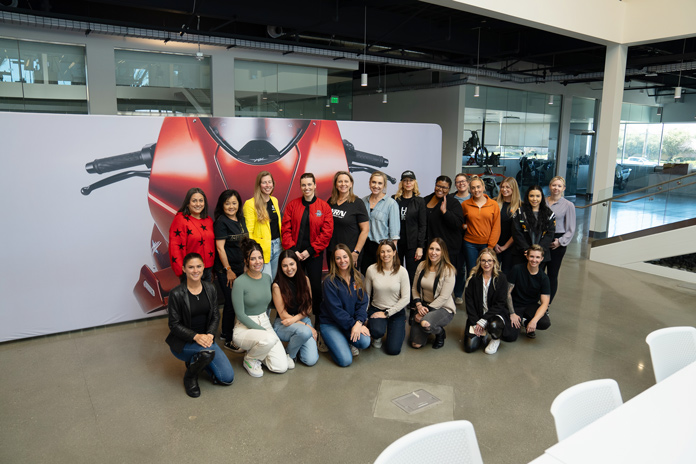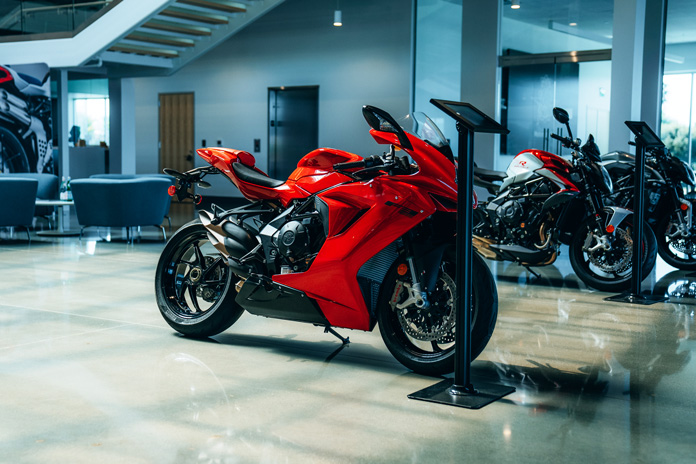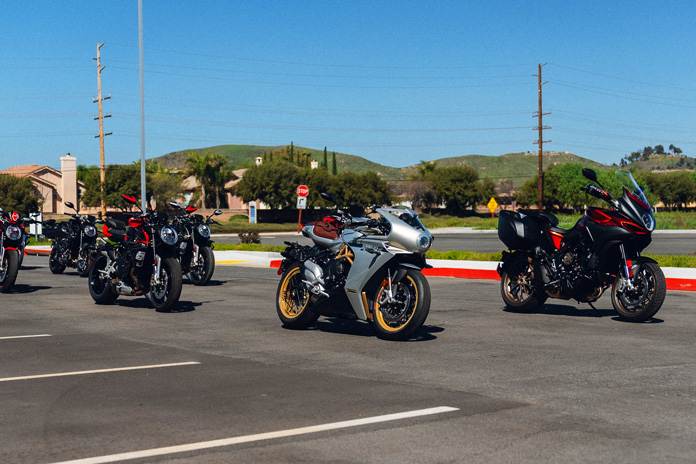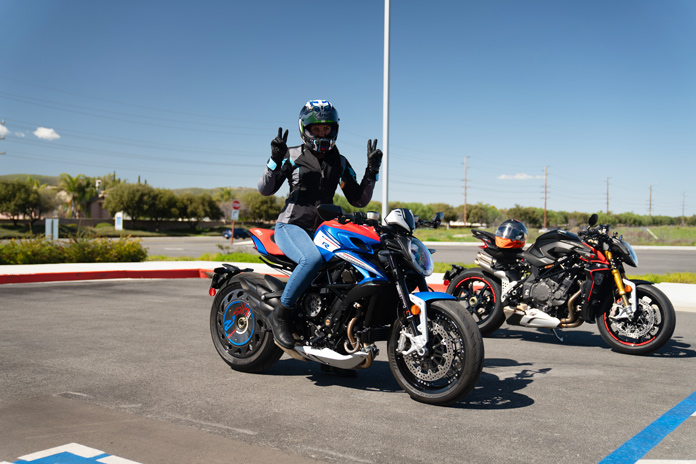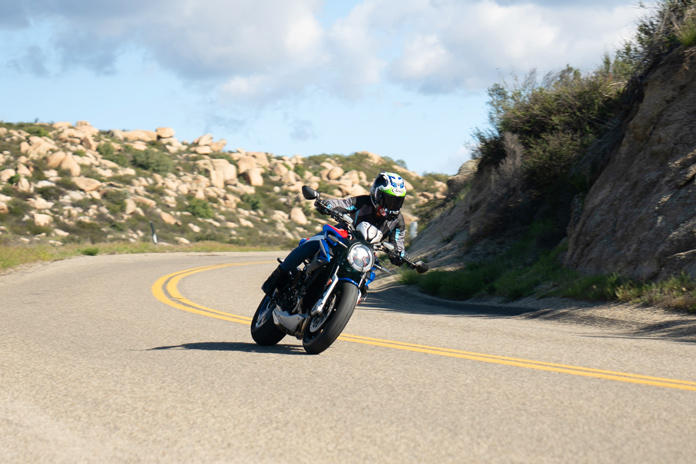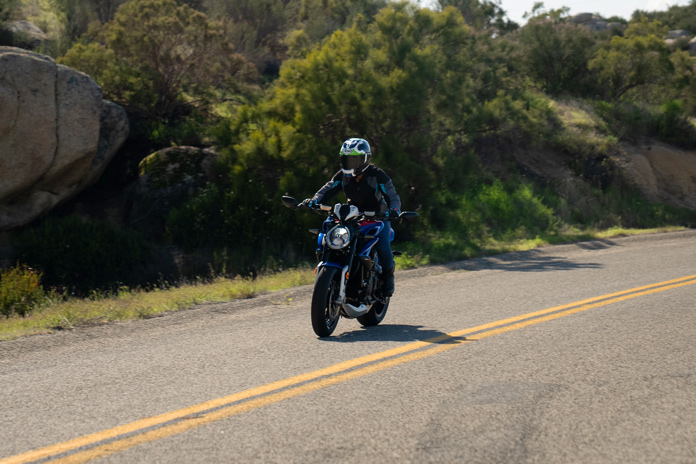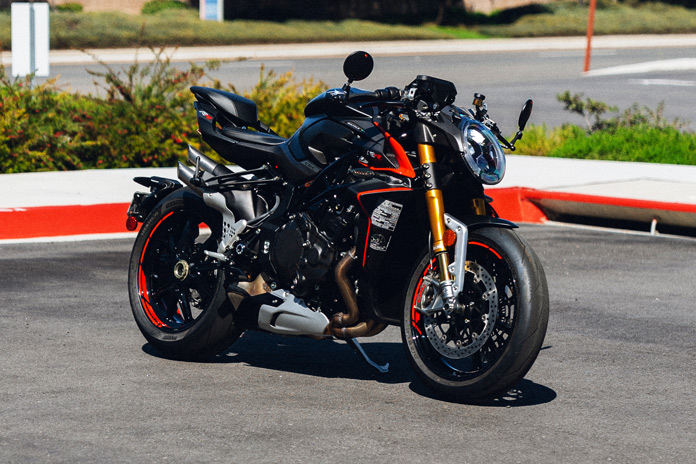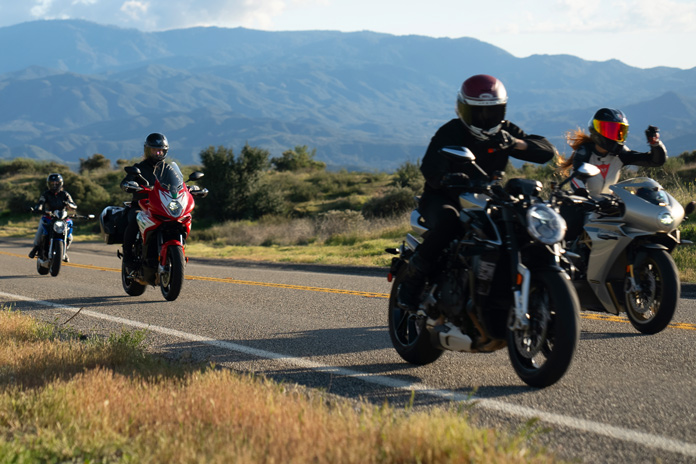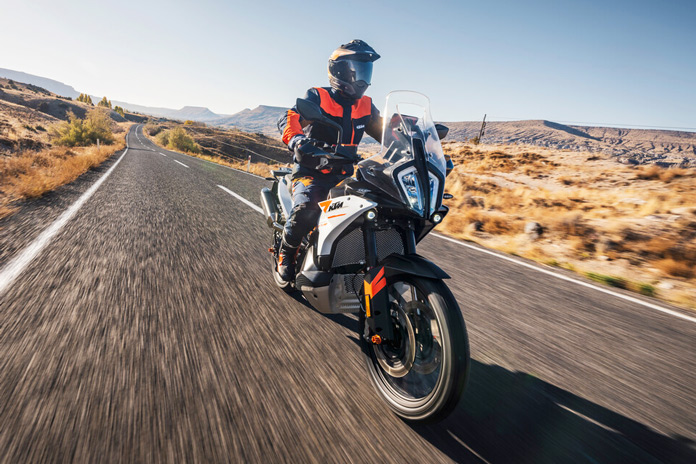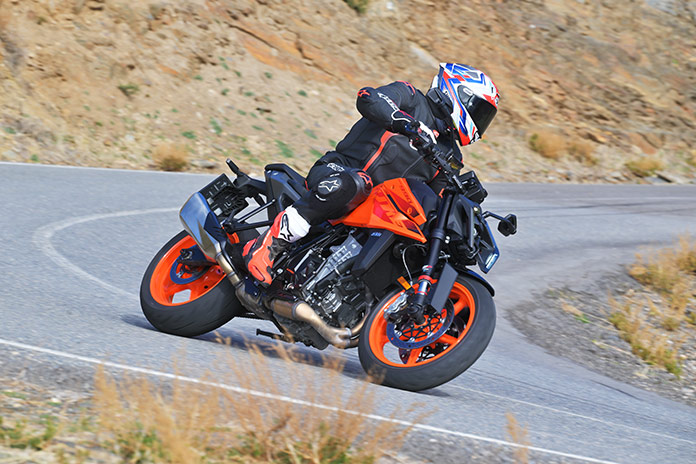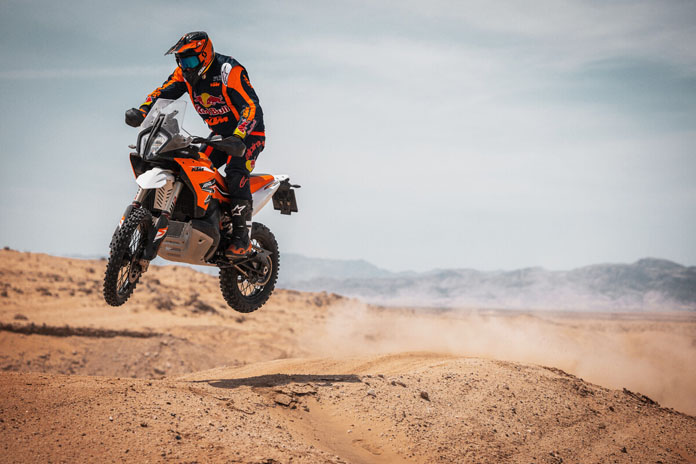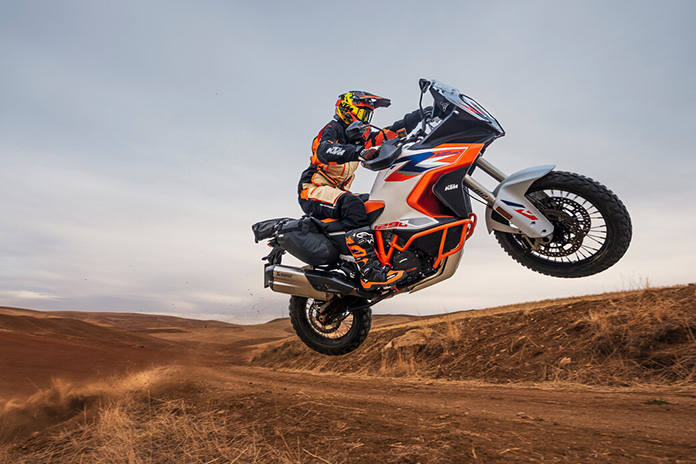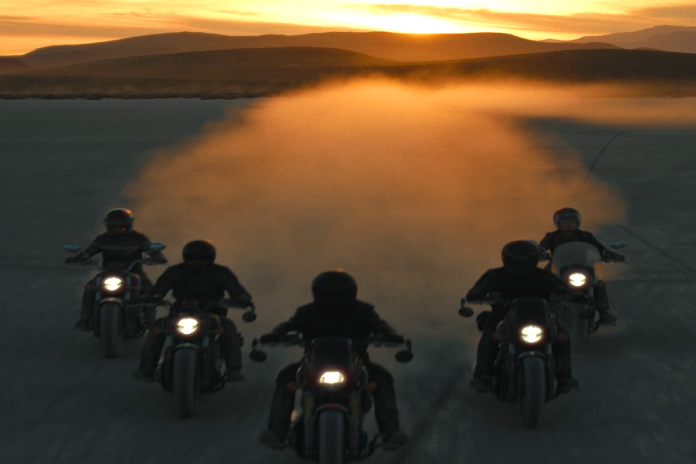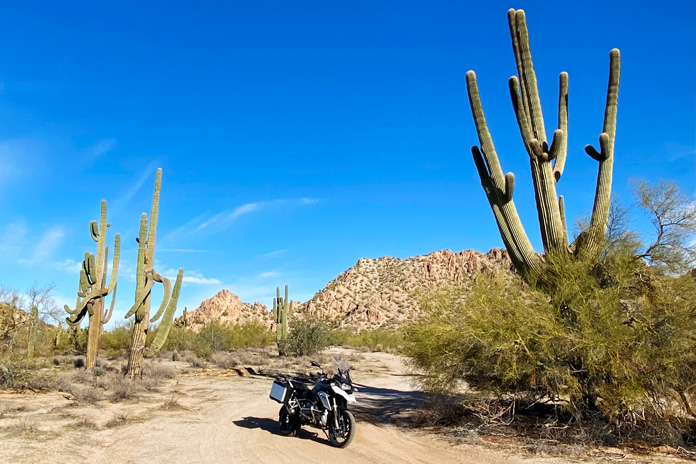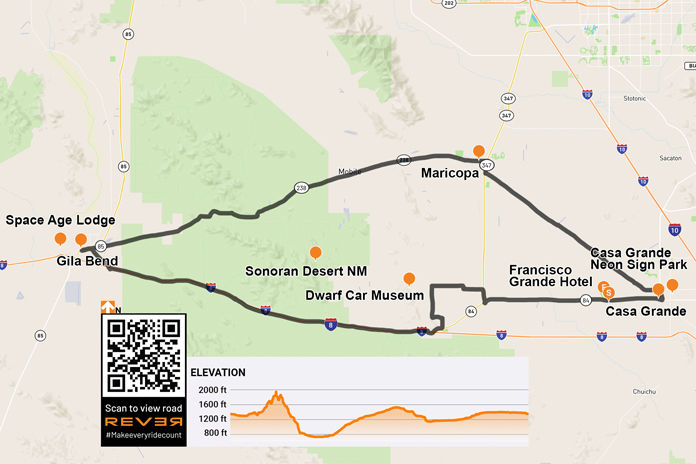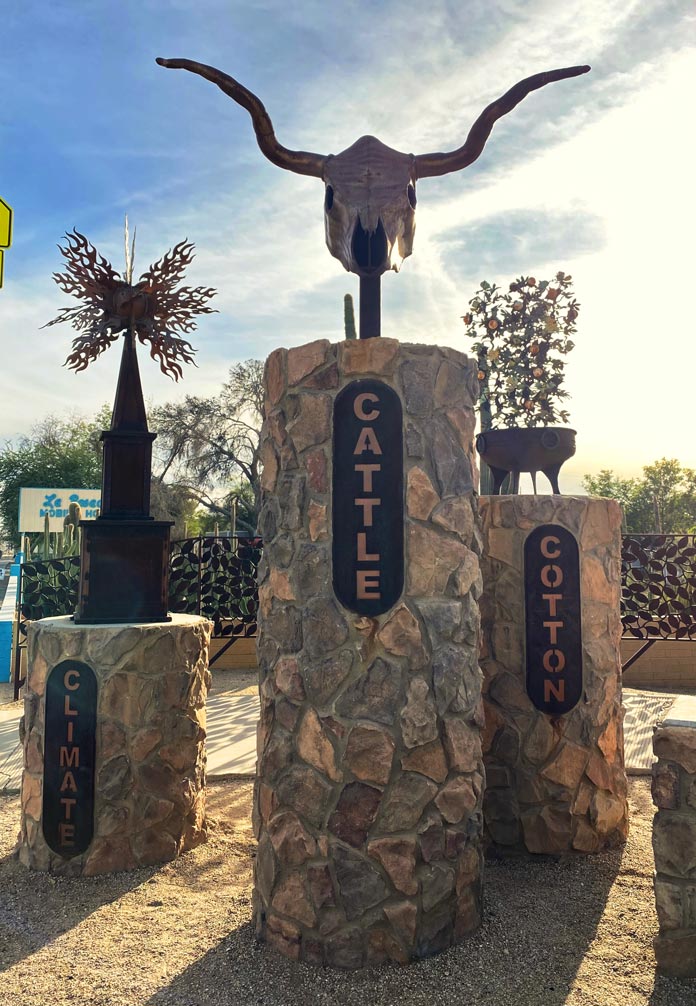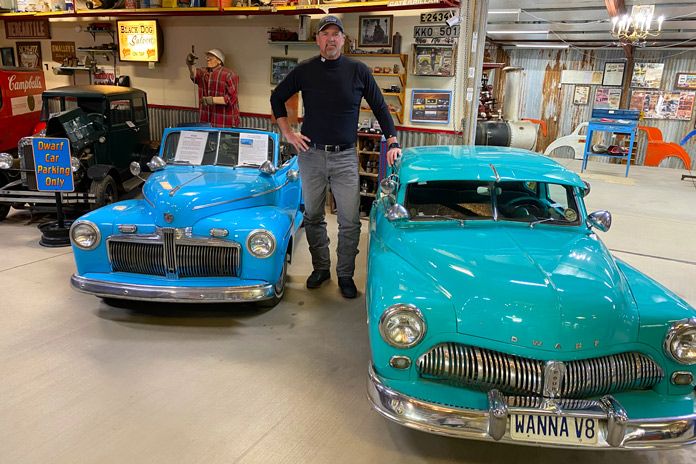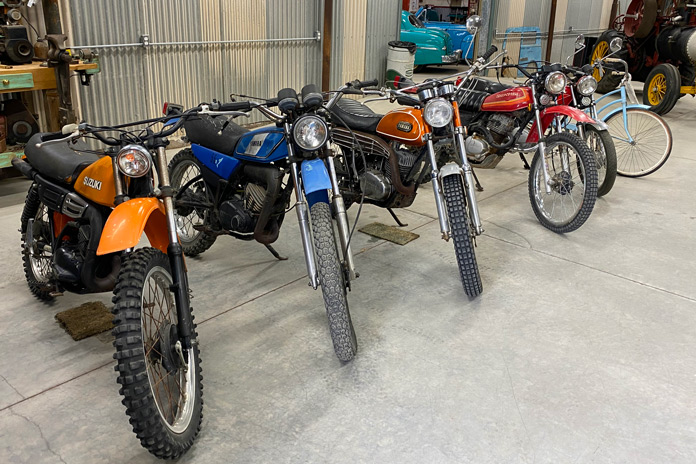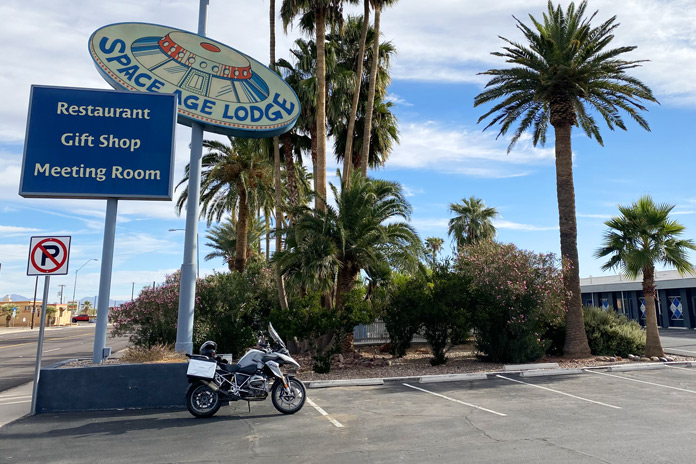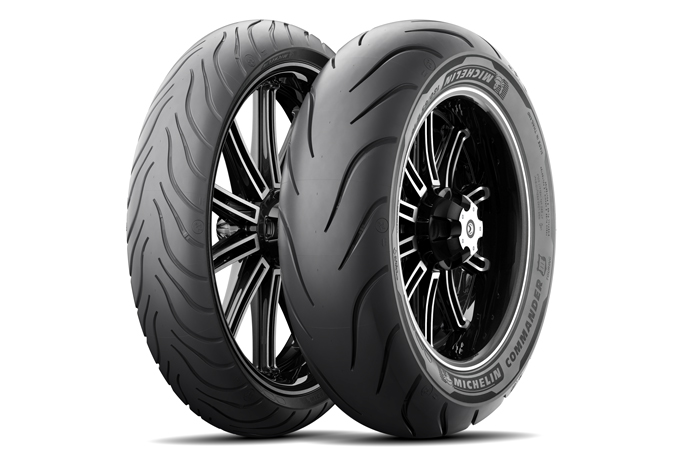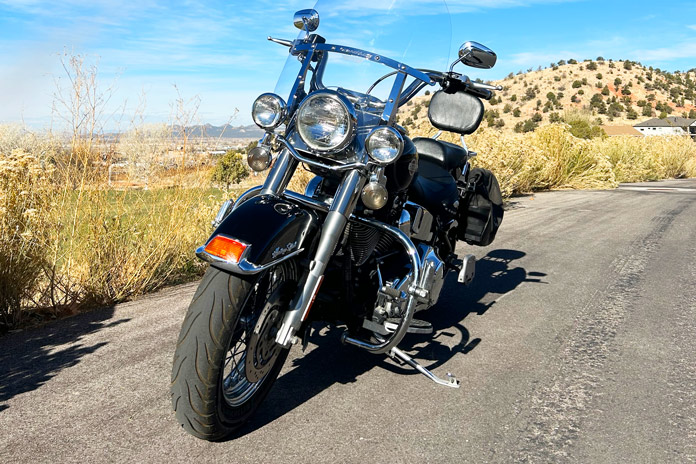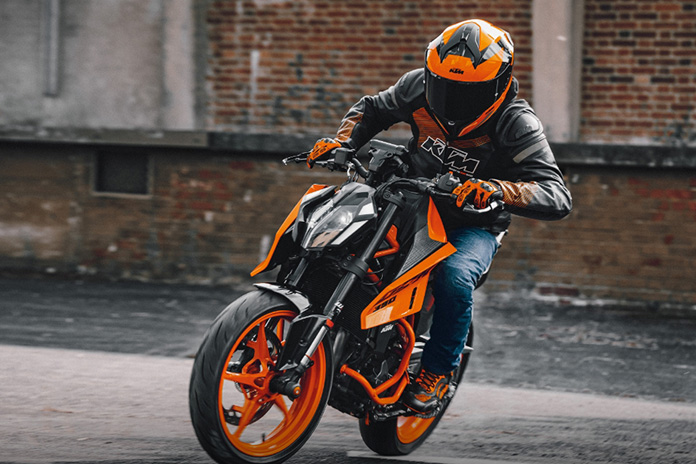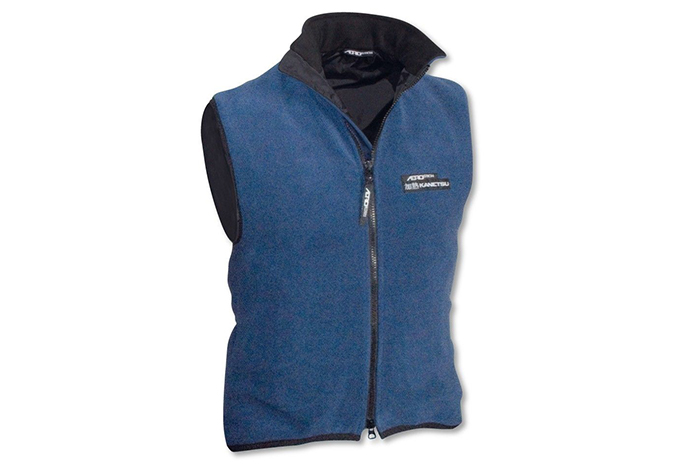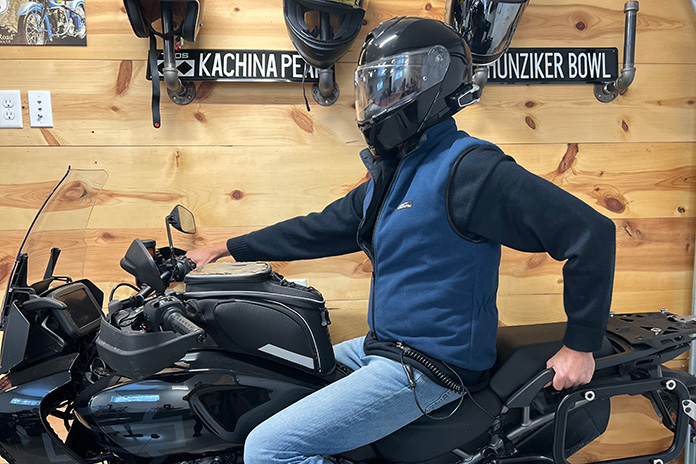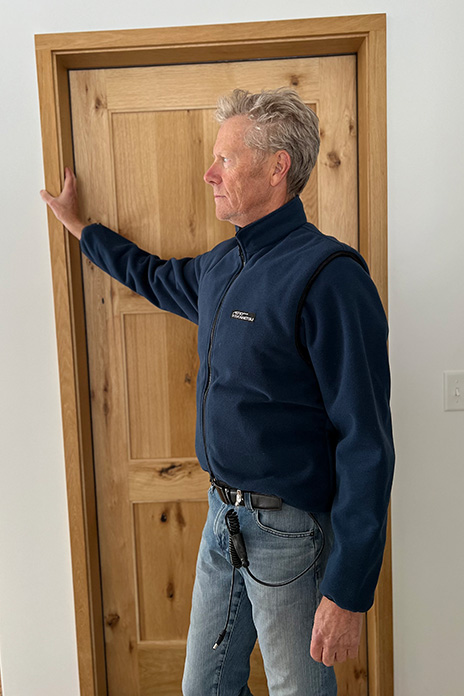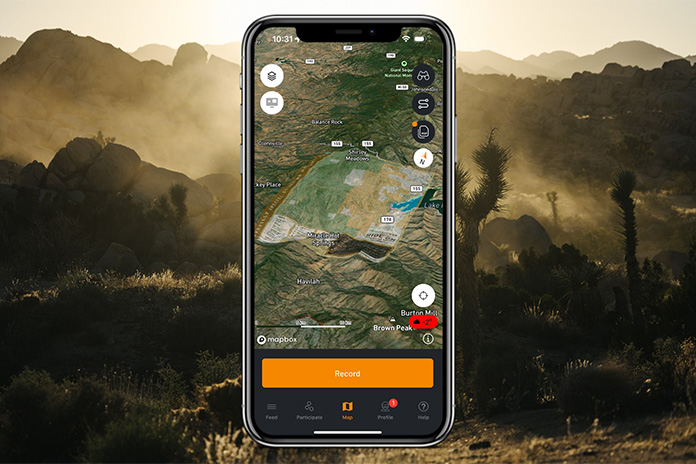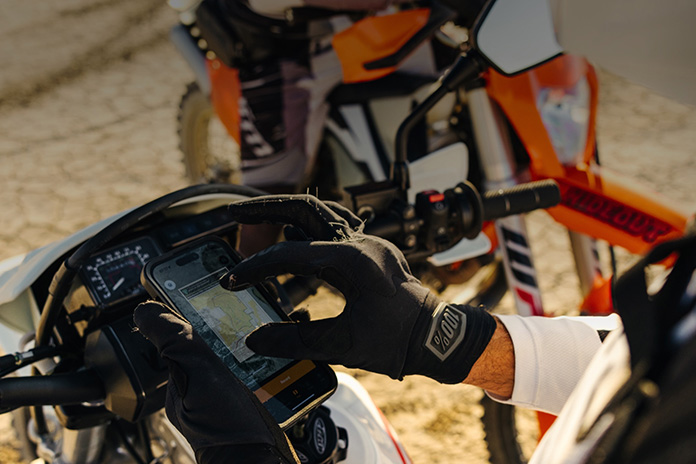
U.S. Route 66 was established in 1926 and was billed as the shortest, fastest, and most scenic all-weather route connecting Chicago, St. Louis, and Los Angeles. Dubbed the “Mother Road” by John Steinbeck in his novel The Grapes of Wrath, Route 66 was used in the 1930s by migrants fleeing the Dust Bowl in search of a better life out West. During World War II, it facilitated the movement of troops and equipment. And during the post-war economic boom of the 1950s and 1960s, Route 66 became indelibly linked to the Great American Road Trip.
Scan QR code above or click here to view the route on REVER
My home state of Oklahoma boasts about 400 miles of the historic highway – the most of any of the eight states touched by Route 66. The Mother Road played a central role in my budding love affair with riding. In 1977, at the age of 14, I rode a 100cc 2-stroke Kawasaki along one of the best stretches of Route 66 in the state – the 100 miles between Oklahoma City and Tulsa. The 200-mile round trip was my first long motorcycle journey. It took me all day and cost about $2 in gas, and my long-suffering parents had no idea what I was up to.
See all of Rider‘s Southern U.S. motorcycle rides here.
Forty-six years after that formative adventure, I retraced my route, only this time I allowed time to take in the roadside attractions and small-town charms that make Route 66 such an iconic piece of Americana. Once again, I felt right at home on the Mother Road.
Not far from my home, I hopped on Route 66 at its junction with Interstate 35 in Edmond. I headed east through wooded terrain and past sprawling Arcadia Lake before stopping at the Arcadia Round Barn. Listed in the National Register of Historic Places, it was built in 1898 by a local farmer who thought its round design would make it tornado-proof. Science may not support that belief, but the Round Barn has survived in the middle of Tornado Alley for 126 years. It’s now a museum, gift shop, and live music venue.

Continuing east, the countryside along this stretch is a mix of woods, farmland, and grazing pasture. Although not the transcontinental artery it once was, Route 66 remains important to the communities it passes through. The tarmac is mostly in great shape, and the occasional sweeping turns are enough to get you off the center of your tires.
In Wellston, I stopped at The Butcher BBQ Stand, one of the best barbecue restaurants around. The award-winning flavors were developed during eight years on the competitive barbecue circuit, including more than 400 1st-place finishes. One of my riding buddies calls this barbecue “meat candy,” and he’s not wrong. Thirty minutes before The Butcher opened, the line was already out the door.
Just a few miles down the road in Warwick is the Seaba Station Motorcycle Museum, which was originally a Route 66 service station named after the proprietor back in the 1920s. The building was purchased in 2007 by Jerry Reis, and he opened the museum in 2010. It’s not only a great place to see a bunch of classic motorcycles, but it also has great Route 66 swag.

I next headed east-northeast toward the town of Chandler, where roadside attractions include the Route 66 Interpretive Center and Route 66 Bowl, a bowling alley with dozens of authentic vintage oil company signs lining the parking lot.

Another 14 miles up the road, we stopped for lunch in Stroud at the Rock Cafe, another Route 66 institution. Opened in 1939, it’s named after the local sandstone used in its construction, and over the years it has been a trusted stop for long-haul truckers, a high school watering hole, and even a makeshift Greyhound bus station for soldiers shipping out during World War II. Pixar executives made stops at the cafe when developing the hit movie Cars and based the character “Sally Carrera” on proprietor Dawn Welch. The burger I had there was outstanding – and it was cooked on “Betsy,” the original 1939 grill.

The final stop on my Mother Road reunion tour was Buck Atom’s Cosmic Curios on Route 66 in Tulsa to see “Muffler Man” Buck Atom, Space Cowboy. Few authentic Muffler Men – giant statues used by businesses for eye-catching advertising – remain. Buck Atom was created using a mold from a salvaged 1960s Muffler Man cowboy. Christened in 2019, Buck is 20 feet tall, and he now holds a silver rocket instead of a muffler. He stands guard over a gift shop at the site of an old Route 66 gas station in the heart of Tulsa. The new, old-time Muffler Man fits right in on the Mother Road.
Headed back to my home in Oklahoma City with daylight fading fast, I hopped on the interstate to make time – the very interstate that marked the end of Route 66’s prominence in Oklahoma, bypassing many of the communities stitched together by the Mother Road. True, the ride home was faster, but it was far less interesting. Just like during my first highway riding adventure back in 1977, I’m more at home on the Mother Road.
See all of Rider‘s touring stories here.
Route 66 Motorcycle Ride Resources
- Route 66
- Travel Route 66
- Oklahoma Tourism
- Oklahoma City Tourism
- Tulsa Tourism
- Arcadia Round Barn
- Seaba Station Motorcycle Museum
- Route 66 Interpretive Center
- Rock Cafe
- Buck Atom’s Cosmic Curios
Tim DeGiusti lives and works in Oklahoma City, Oklahoma. Tim returned to motorcycling in 2012 after a long break, and since has ridden throughout Oklahoma and 38 other states (and counting).
The post Route 66 Motorcycle Ride in Oklahoma | Favorite Ride appeared first on Rider Magazine.
Source: RiderMagazine.com





